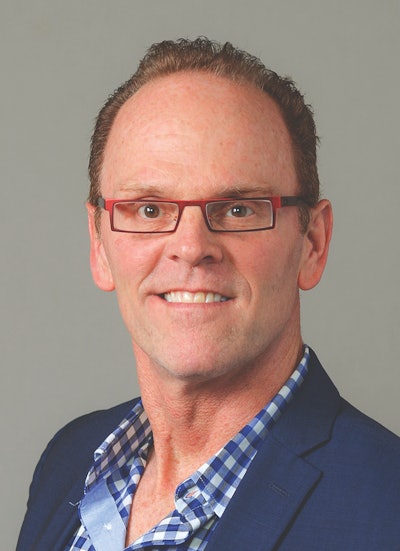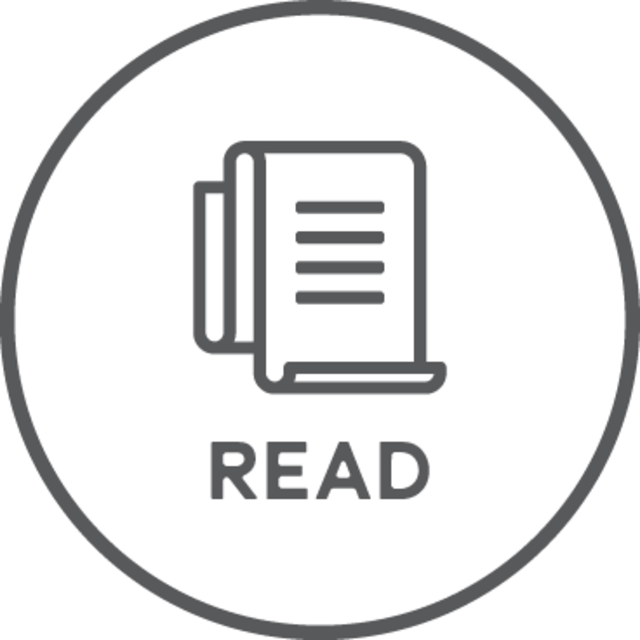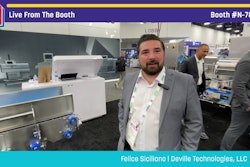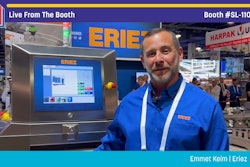
In recent years, Extended Producer Responsibility (EPR) programs for packaging have gained significant traction across the U.S. Since 2021, five states—Maine, Oregon, Colorado, California, and Minnesota—have enacted EPR laws for packaging, each with distinct provisions and tactics. More states will certainly follow, and policymakers likely will look to these early adopters for lessons on what might work well and what challenges arise in implementing packaging EPR programs.
For several years, AMERIPEN has been working with lawmakers to advocate for the packaging industry and to guide those lawmakers in building programs that are reliable, efficient, equitable, and fair. We believe that a balanced approach, incorporating industry input and allowing for flexibility and innovation, is the right path forward for advancing recycling goals. Some of the current laws do a better job of that than others. As these laws are further refined through rulemaking and are implemented, policymakers and stakeholders can learn from each state’s experiences, potentially leading to more harmonized and effective EPR frameworks in the future.
Comparing the laws
A deeper look at the laws’ provisions underscores the complexity of designing packaging waste management policy and their patchwork nature. Following is a look at key elements in the laws:
Scope of covered materials. While all five states cover packaging, there are differences in the scope of materials included. Oregon and California, for instance, explicitly include food serviceware. In Maine, Colorado, and Minnesota, the focus is more narrowly on packaging. These differences in scope could lead to variations in the impact of the laws on different sectors of the packaging industry. They also create additional challenges for producers engaging in cross-state commerce.
PRO structures and oversight: The structure and number of producer responsibility organizations (PROs) vary across the states. Maine is unique in that only one PRO is allowed through a 10-year contract with the state. Colorado, California, and Minnesota also allow only one PRO to begin, with additional PROs allowed after the initial EPR programs are well established. Oregon allows for multiple PROs from the start, but only one PRO is currently positioned to run the program for now.
 | Read this related article, “CAA Provides Deadline Schedule for Brands Affected by EPR” |
/p>
The level of governmental oversight also differs significantly among the states. Maine’s law gives substantial authority to the state’s Department of Environmental Protection (DEP), with limited stakeholder engagement. Not only will this approach be taxing on the state agency, but it also isn’t consistent with established EPR laws in other parts of the world that recognize and tap industry stakeholders for their ability to help create effective long-term solutions for recycling.
While the previously mentioned single PRO in Maine can receive input from producers and others for its annual plan, stakeholder input is not required, and the law does not call for an advisory committee of any kind. The PRO in Maine is also charged with developing an adjusted-fee (eco-modulation) formula for fees and funding infrastructure development in the state, but again, both are subject to DEP approval.
Similarly, the California and Oregon laws call for significant state agency oversight and decision-making power on most of the substantive elements of the program. Advisory boards are allowed in Minnesota, Oregon, Colorado, and California, but their recommendations are nonbinding. The PRO in Colorado will have significant decision-making authority: It can directly contract with recycling service providers, determine readily recyclable parameters, and set minimum recycling collection and recycled content rates. The Colorado PRO also will be responsible for the expansion of nonresidential recycling services by 2028.
Like in Colorado, Minnesota’s PRO approach allows for more industry collaboration, with the state maintaining an advisory role. The law calls for the PRO to be formed by packaging producers. The PRO will develop a process and reimbursement model for core recycling and composting functions, focusing on services at residences, schools, small nonprofits, and governmental entities. By contrast, in Maine the state develops reimbursement methods, while the Colorado and Minnesota laws mandate the PRO to develop reimbursement plans, in consultation with their advisory boards.
Funding structures. The five states also take different approaches to funding their EPR programs. Producers in Maine, Colorado, and California are required to fund 100% of their respective recycling and composting systems.
However, because of commingling of recycling and commodities in Oregon, producers there will be paying for a mix of residential and commercial recycling, funding about 30% of an expanded recycling system in the state. Monies also will be used to fund ratepayer protection, contamination reduction programs, expanded recycling collection and composting access, waste prevention and reuse grants, rural and distant community freight costs, administrative costs, and educational resources.
 A deeper look at the laws’ provisions underscores the complexity of designing packaging waste management policy and their patchwork nature.
A deeper look at the laws’ provisions underscores the complexity of designing packaging waste management policy and their patchwork nature.
Minnesota introduces a shared responsibility model, featuring a gradual increase in producer responsibility, starting at 50% in 2029 and capping at 90% in 2031 and each year thereafter. This allows for a smoother transition and maintains involvement from industry stakeholders in the recycling ecosystem.
Recycling targets and eco-modulation. Methods for setting recycling targets also vary among the states. California and Oregon plastic-specific goals are stated in the statute, while Maine and Colorado’s goals are set by the state or PRO, respectively. Minnesota law avoids arbitrary rates and dates and calls for the PRO and state to collaboratively establish targets.
Goal provisions in California’s law are extremely granular. They require all covered materials to be recyclable or compostable by 2032, with specific recycling rates for plastic materials (30% by 2028, 40% by 2030, and 65% by 2032). They also mandate a 25% source reduction in covered materials by weight and number of plastic components by 2032 and prohibit expanded polystyrene (EPS) food serviceware if recycling rates are not met (25% by 2025, 30% by 2028, 50% by 2030, and 65% by 2032).
California’s law also establishes an additional separate $500 million Plastic Pollution Mitigation Fund, paid annually by the PRO for at least 10 years. The PRO may collect up to $150 million of the total amount from plastic resin manufacturers that sell covered plastic materials to producers participating in the PRO. The money collected will pay for the monitoring and mitigation of plastic pollution, particularly in low-income, disadvantaged, and rural areas. No other state has such a provision in its law.
Eco-modulation is included in all five state laws, and, with the exception of Colorado, the methodology and fees are developed by the PROs. Incentivizing factors, such as the use of post-consumer recycled content, also are set in statute.
Timelines. Implementation timelines vary across the states, reflecting differences in the readiness of existing infrastructure and the ambition of the programs. Oregon and Colorado require producer payments by July 2025, Maine by late 2026, California by early 2027, and Minnesota by early 2029. These different timelines will affect the speed of change in packaging practices and may impact recycling infrastructure development in each state.
Why AMERIPEN supports Minnesota’s approach
The emergence of packaging EPR laws in five states provides valuable insights into different policy approaches and their potential impact on both the packaging industry and the recycling and composting infrastructure. While each state has taken a unique approach that reflects local conditions and priorities, Minnesota’s law stands out for its collaborative nature and consideration of industry perspectives, including the following aspects:
Shared responsibility. The gradual increase in producer responsibility (50% to 90%) is a fair compromise that supports Minnesota’s existing strong recycling infrastructure while allowing stakeholders to adapt. By law, service providers also must register with the PRO and meet performance requirements to be reimbursed for covered costs. Over the past two years, AMERIPEN has staunchly advocated for laws with true shared responsibility for program costs.
Fair competition. The law provides for reimbursement to service providers for infrastructure investments based on competitive bids. This provision promotes efficiency and innovation in recycling services, potentially leading to cost-effective improvements in the recycling system.
Producer-led PRO. Allowing packaging producers to form and manage the PRO leverages industry knowledge and insights. This approach should lead to more practical and efficient implementation of the EPR program, as those most familiar with packaging design and production are directly involved in the decision-making.
 | Read this related column from Dan Felton, “5 Lessons in Eco-Modulation” |
Non-statute performance targets. Instead of mandating specific recycling rates in statute, the law allows for collaborative target-setting between the PRO and the state. This flexibility can lead to more realistic and achievable goals that consider local conditions and capabilities. AMERIPEN ideally would like to see PROs given full authority to develop performance goals that are then reviewed and approved by the state.
Innovation-friendly definition of recycling. The neutral definition allows for the inclusion of new recycling technologies, which AMERIPEN views as crucial for long-term improvement in recovery and recycling rates. This approach can encourage investment in innovative recycling solutions that may not fit traditional definitions but could significantly improve recycling outcomes.
Consideration of existing infrastructure. Minnesota’s approach considers the state’s current recycling and composting landscape and laws, making it more practical to implement. This can lead to a more seamless integration of the EPR program with existing systems, potentially reducing disruption and improving overall effectiveness.
Focus on core functions. By concentrating on core recycling functions at residences, schools, small nonprofits, and governmental entities, the law targets areas where improvements can have significant impacts without overextending into sectors (like large commercial operations) that can manage their own recycling costs.
Watching outcomes
Factors such as existing recycling and composting infrastructure, local political landscapes, and specific environmental priorities have all played a role in shaping these five diverse EPR laws. Ultimately, their success will be measured by their ability to increase recycling and composting, reduce packaging waste, and drive innovation in sustainable packaging design. As implementation progresses, close observation of these outcomes will provide valuable data to inform future policy decisions, at both the state and—potentially—federal levels. PW
AMERIPEN represents the U.S. packaging value chain by providing policymakers with fact-based, material-neutral, scientific information. Contact Dan Felton at [email protected].






















